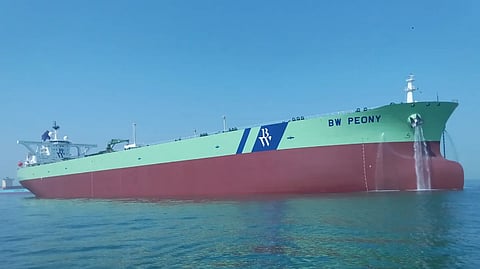DHT Holdings sells all Chinese-built VLCCs in fleet
New York-listed tanker shipping company DHT Holdings has sold its last very large crude carrier (VLCC) built by Chinese shipyards, leaving the shipowner with only South Korean-built vessels in its fleet.
Last week, DHT confirmed the sale of a VLCC built in 2011. The vessel, identified as DHT Lotus, has a deadweight of 320,000 and was built by Bohai Shipbuilding Heavy Industry for nearly US$55 million.
The latest news is that DHT Lotus’ sister vessel, DHT Peony, has also been sold for nearly US$55 million, in line with VesselValue’s market estimate of US$54.47 million.
DHT is the first known VLCC owner to sell all its Chinese-built vessels. This comes as the US Government continues to signal that it intends to impose high port fees on Chinese-built vessels.
After the sale of the above two vessels, DHT’s fleet will still have 21 VLCCs built by South Korean shipyards and four new VLCCs to be delivered by Hanwha Ocean and HD Hyundai Samho in 2026.
The US Trade Representative’s (USTR) Office held hearings on March 24 and March 26 on proposed measures to be taken following the 301 investigation into what the US Government claims is China’s dominance in the maritime, logistics and shipbuilding industries.
The proposed measures include a maximum fee of US$1 million, or US$1,000 per net tonnage, to be imposed on Chinese vessel operators for each vessel entering US ports; and a service fee of US$1.5 million to be imposed on Chinese-built vessels entering US ports based on the proportion of Chinese vessels in the fleet.
According to foreign media reports, the USTR is expected to make a final decision in the second half of 2025, based on public feedback. Ultimately, US President Donald Trump will decide whether to implement it.
Most operators have one or more Chinese-built vessels in their fleets, which means that shipowners are required to pay port fees when calling at US ports.
A BIMCO filing with the USTR noted that a 300,000DWT VLCC will be charged US$1,000 per net tonnage, which translates to more than US$100 million per port call.


